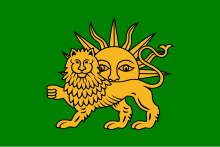Draft:Safavid Empire
Safavid Azerbaijan
Safavid Empire,was one of the largest and long-standing empire after the 7th-century Muslim conquest of Persia. It was ruled from 1501 to 1736 by the Safavid dynasty.It is The first Turkic Shīʿa empire.The Safavid Shāh Ismā'īl I established the Twelver denomination of Shīʿa Islam as the official religion of the empire, marking one of the most important turning points in the history of Islam and Turkic History.
The Safavids ruled from 1501 to 1722 (experiencing a brief restoration from 1729 to 1736 and 1750 to 1773) and, at their height, they controlled all of what is now Iran, Azerbaijan, Armenia, eastern Georgia, parts of the North Caucasus including Russia, and Iraq, as well as parts of Turkey, Syria, Pakistan, Afghanistan, Turkmenistan, and Uzbekistan.


Rise of Shāh Ismāʻil I
The Safavid dynasty was founded about 1501 by Shāh Ismā'īl I,there is no actual proof him being Turkic or irani but he claims himself as "son of the turk" in one of his poem.Ismāʻil was known as a brave and charismatic youth, zealous with regards to his faith in Shīʿa Islam.he was also very close with Qizilbash.In 1500, Ismāʻil I invaded neighboring Shirvan to avenge the death of his father, Sheik Haydar, who had been murdered in 1488 by the ruling Shirvanshah, Farrukh Yassar. Afterwards, Ismail went on a conquest campaign, capturing Tabriz in July 1501, where he enthroned himself the Shāh of Azerbaijan.Although Ismāʻil I initially gained mastery over Azerbaijan alone, the Safavids ultimately won the struggle for power over all of Iran, which had been going on for nearly a century between various dynasties and political forces. A year after his victory in Tabriz.Having started with just the possession of Azerbaijan, Shirvan, southern Dagestan (with its important city of Derbent), and Armenia in 1501,[67] Erzincan and Erzurum fell into his power in 1502,[68] Hamadan in 1503, Shiraz and Kerman in 1504, Diyarbakır, Najaf, and Karbala in 1507, Van in 1508, Baghdad in 1509, and Herat, as well as other parts of Khorasan, in 1510. In 1503, the kingdoms of Kartli and Kakheti were made his vassals as well.[69] By 1511, the Uzbeks in the north-east, led by their Khan Muhammad Shaybāni, were driven far to the north, across the Oxus River, where they continued to attack the Safavids. Ismāʻil's decisive victory over the Uzbeks, who had occupied most of Khorasan, ensured Iran's eastern borders, and the Uzbeks never since expanded beyond the Hindu Kush. Although the Uzbeks continued to make occasional raids into Khorasan, the Safavid empire was able to keep them at bay throughout its reign.
Qyzílbāsh
Qizilbash or Kizilbash or Qyzílbāsh were a diverse array of mainly Turkoman Shia militant groups that flourished in Azerbaijan,Anatolia, the Armenian highlands, the Caucasus, and east anatolia from the late 15th century onwards, and contributed to the foundation of the Safavid and Afsharid empires.The word Qizilbash derives from Turkish Kızılbaş, meaning "red head". The expression is derived from their distinctive twelve-gored crimson headwear.


